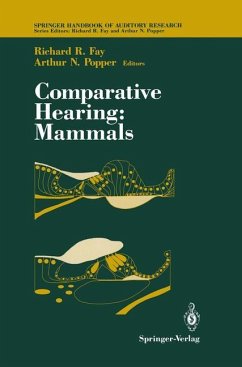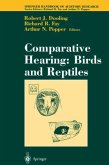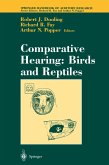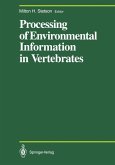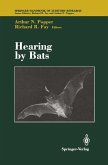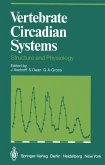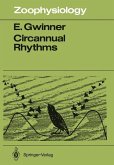This volume presents a comprehensive overview of what is understood about the similarities and differences among mammals in their sense of hearing, and the structures of the ear that condition and transform sound wave-forms. The goal of each chapter is to present what is known about the diversity of hearing functions among mammals so that we may better understand the relationships between the structures of ears and the hearing abilities of the animals most closely related to humans. This book will be invaluable to researchers, students, and clinicians in auditory research.
The Springer Handbook of Auditory Research presents a series of comprehen sive and synthetic reviews of the fundamental topics in modern auditory research. The volumes are aimed at all individuals with interests in hearing research including advanced graduate students, postdoctoral researchers, and clinical investigators. The volumes are intended to introduce new investi gators to important aspects of hearing science and to help established inves tigators to better understand the fundamental theories and data in fields of hearing that they may not normally follow closely. Each volume is intended to present a particular topic comprehensively, and each chapter will serve as a synthetic overview and guide to the lit erature. As such, the chapters present neither exhaustive data reviews nor original research that has not yet appeared in peer-reviewed journals. The volumes focus on topics that have developed a solid data and conceptual foundation rather than on those for which a literature is only beginning to develop. New research areas will be covered on a timely basis in the series as they begin to mature. Each volume in the series consists of five to eight substantial chapters on a particular topic. In some cases, the topics will be ones of traditional interest for which there is a substantial body of data and theory, such as auditory neuroanatomy (Vol. 1) and neurophysiology (Vol. 2). Other volumes in the series will deal with topics which have begun to mature more recently, such as development, plasticity, and computational models of neural processing.
The Springer Handbook of Auditory Research presents a series of comprehen sive and synthetic reviews of the fundamental topics in modern auditory research. The volumes are aimed at all individuals with interests in hearing research including advanced graduate students, postdoctoral researchers, and clinical investigators. The volumes are intended to introduce new investi gators to important aspects of hearing science and to help established inves tigators to better understand the fundamental theories and data in fields of hearing that they may not normally follow closely. Each volume is intended to present a particular topic comprehensively, and each chapter will serve as a synthetic overview and guide to the lit erature. As such, the chapters present neither exhaustive data reviews nor original research that has not yet appeared in peer-reviewed journals. The volumes focus on topics that have developed a solid data and conceptual foundation rather than on those for which a literature is only beginning to develop. New research areas will be covered on a timely basis in the series as they begin to mature. Each volume in the series consists of five to eight substantial chapters on a particular topic. In some cases, the topics will be ones of traditional interest for which there is a substantial body of data and theory, such as auditory neuroanatomy (Vol. 1) and neurophysiology (Vol. 2). Other volumes in the series will deal with topics which have begun to mature more recently, such as development, plasticity, and computational models of neural processing.

